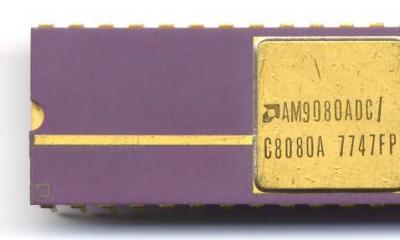Any lover of homemade products and electronics use diodes as indicators, or as lighting effects and lighting. In order for the LED device to glow, you need to connect it correctly. You already know that a diode conducts. Therefore, before soldering, you need to determine where the anode and cathode of the LED are.
You may see two LED designations on a circuit diagram.
The triangular half of the designation is the anode, and the vertical line is the cathode. The two arrows indicate that the diode is emitting light. So, the diagram indicates the anode and cathode of the diode, how to find it on a real element?
Pinout of 5mm diodes
To connect the diodes as in the diagram, you need to determine where the plus and minus of the LED are. First, let's look at the example of common low-power 5 mm diodes.

The figure above shows: A - anode, K - cathode and schematic symbol.
Pay attention to the flask. You can see two parts in it - this is a small metal anode, and a wide part that looks like a bowl is the cathode. The plus is connected to the anode, and the minus to the cathode.
If you are using new LED elements, it is even easier for you to determine their pinout. The length of the legs will help determine the polarity of the LED. Manufacturers make short and long legs. The plus is always longer than the minus!
If you are not soldering a new diode, then its plus and minus are the same length. In this case, a tester or a simple multimeter will help to determine the plus and minus.
How to determine the anode and cathode of diodes 1W or more
In floodlights, 5mm samples are used less and less; they have been replaced by powerful elements with a power of 1 watt or more or SMD. To understand where the plus and minus are on a powerful LED, you need to carefully look at the element from all sides.

The most common models in such a case have a power of 0.5 watts. The polarity mark is circled in red in the figure. In this case, the anode of the 1W LED is marked with a plus sign.
How to find out the polarity of SMD?
SMDs are actively used in almost any technology:
- Light bulbs;
- LED strips;
- flashlights;
- indication of something.
You won’t be able to see their insides, so you need to either use testing devices or rely on the LED housing.
For example, on the SMD 5050 case there is a mark on the corner in the form of a cut. All pins located on the tag side are cathodes. Its body contains three crystals, this is necessary to achieve high brightness.

A similar designation for SMD 3528 also indicates the cathode, take a look at this photo of the LED strip.

The marking of the SMD 5630 pins is similar - the cut indicates the cathode. It can also be recognized by the fact that the heat sink on the bottom of the case is shifted towards the anode.

How to determine the plus on a small SMD?
In some cases (SMD 1206), you can find another way to indicate the polarity of LEDs: using a triangle, U-shaped or T-shaped pictogram on the surface of the diode.
The protrusion or side that the triangle points to is the direction of current flow, and the terminal located there is the cathode.

Determine polarity with a multimeter
When replacing diodes with new ones, you can determine the plus and minus of your device's power supply from the board.
LEDs in spotlights and lamps are usually soldered onto an aluminum plate, on top of which a dielectric and current-carrying tracks are applied. It usually has a white coating on top; it often contains information about the characteristics of the power source, and sometimes the pinout.
But how can you find out the polarity of an LED in a light bulb or matrix if there is no information on the board?

For example, on this board the poles of each LED are indicated and their name is 5630.
To check for serviceability and determine the plus and minus of the LED, use a multimeter. We connect the black probe to minus, com or a socket with a grounding sign. The designation may differ depending on the multimeter model.
Next, select the Ohmmeter mode or the diode test mode. Then we connect the multimeter probes one by one to the diode terminals, first in one order, and then vice versa. When at least some values appear on the screen, or the diode lights up, it means the polarity is correct. In diode testing mode, the values are 500-1200 mV.

In measurement mode, the values will be similar to those in the figure. A unit in the leftmost digit indicates exceeding the limit, or infinity.
Other ways to determine polarity
The easiest option for determining where the plus of an LED is is batteries with motherboard, size CR2032.
Its voltage is about 3 volts, which is quite enough to light the diode. Connect the LED, depending on its glow you will determine the location of its pins. This way you can test any diode. However, this is not very convenient.

You can assemble a simple probe for LEDs, and not only determine their polarity, but also the operating voltage.
 Homemade probe circuit
Homemade probe circuit At correct connection LED, a current of about 5-6 milliamps will flow through it, which is safe for any LED. The voltmeter will show the voltage drop across the LED at this current. If the polarity of the LED and the probe match, it will light up and you will determine the pinout.
You need to know the operating voltage, since it differs depending on the type of LED and its color (red takes less than 2 volts).
And the last method is shown in the photo below.

Turn on the Hfe mode on the tester, insert the LED into the connector for testing transistors, into the area marked as PNP, into holes E and C, with the long leg in E. This way you can check the functionality of the LED and its pinout.
If the LED is made in a different form, for example, smd 5050, you can use this method simply - insert regular sewing needles into E and C, and touch them with the LED contacts.
Any lover of electronics, and even homemade products in general, needs to know how to determine the polarity of an LED and how to check them.
Be careful when choosing the elements of your circuit. At best, they will simply fail faster, and at worst, they will instantly burst into blue flame.
Capable of passing electric current in a certain direction. If the connection is made inversely, the electric current does not pass through the circuit, and the desired electrical appliance will not turn on. This is explained by the fact that the devices are based on diodes, and not all have the ability to glow. This indicates that the LED has polarity and operates in a certain direction of current. In this regard, for connection it is important to correctly determine where the minus and plus of the LEDs are. Let's look at several ways.
Visually
If you have an LED in your hands where the plus and where the minus are, you don’t know, try to do it visually. How to visually determine LED polarity? Simple enough.
The new LED has two leads, one should be shorter. The short lead is the cathode. It’s easy to remember: “short” - “cathode”, both words start with “k”. The plus is where the long lead is. If we are dealing with a used LED whose legs are bent, the task becomes more complicated.
Then we peer into the body, where the most important element is located - the crystal. It lies on a tiny stand, a cup. The output from the stand is the cathode, on its side there is a cut or notch.
BUT this method is not always applicable. Many manufacturers today do not comply with production standards, and the range of models is amazingly diverse. Some manufacturers mark the cathodes with a green dot or line, or use “-” and “+” signs. If there are no external identifying signs, you need to conduct electrical testing.
Power supply to help
The second way to determine the LED polarity is to connect it to. The main thing is to choose the right power source with voltage so that it does not exceed the maximum voltage level of the LED, otherwise it will burn out or deteriorate. The elements are connected like this: “-” is connected to “+”, “+” is connected to “-”.
Multimeter
If the above methods do not work, use a multimeter. Using a multimeter to determine the polarity of the LED will take a maximum of a minute. First you need to select the resistance level measurement mode on the equipment, and then touch the LED contacts with special pliers. The black wire goes to "-" and the red wire to "+". You don't need to touch for too long, 20-30 seconds is enough. If the switching was performed directly (“+” to “+”, and “-” to “-”), the multimeter displays an indicator in the region of 1.7 kilo Ohms. If the activation is reversed, the measurements are not displayed on the device.
It is somewhat easier to measure in diode mode: when connected directly, the light will light up. This mode is suitable for green and red light bulbs, but white and blue light bulbs are designed for current with a voltage of more than 3 V. For this reason, when blue and white light bulbs are connected, they can light up even with the correct polarity.
In this case, the mode for measuring transistor characteristics is used. The LED is inserted into the grooves of the block, from the bottom of the multimeter. The PNP part is used: one leg of the diode is inserted into connector “E” - the emitter, and the second into “C” - the collector. The light bulb lights up when the cathode is connected to the collector.
Thus, determining polarity is not particularly difficult.
LEDs are becoming increasingly popular today. Connecting different types of these light elements has its own characteristics, but the first thing you need to start with in any case is the need to correctly determine where the “+” and “–” are in the device.
How can you visually determine plus and minus?
There are several types of diodes used by electricians, both amateurs and professionals, but the methods for visually determining polar poles are approximately the same:
Battery detection
To check the polarity on a diode light bulb, you can use a source that produces a constant voltage. This source can be a car battery or a power supply (battery). 
The diode must be connected to the power supply and the voltage gradually increased. If the lamp is connected correctly, it lights up. If this light is not there, then you need to change the polarity and connect with the other ends. Remember that above 3-4 V there is no need to increase the voltage, because the element may burn out.
You can also check the anode-cathode matching using a battery, car battery or mobile phone with a voltage from 4.5 to 12 V. You can also make such a design - connect 1.5 V batteries in series together. 
You cannot connect a diode directly to the battery, because it will burn out. To connect, you must use a resistor that limits the electric current. The resistance of this device for low-power diode light bulbs is from 680 Ohms to 1-2 kOhms. For high-power LED lamps, it is necessary to use a resistor of tens of kOhms.
Checking with a multimeter
Using this device, you can determine not only the polarity, but also the performance of the LED element. Measurements are carried out in ohmmeter mode. Modern models of multimeters have a built-in function - “diode testing”. 
To determine plus or minus, connect the probes of the device to the element under test and observe the readings of the measuring device. If the screen shows “infinite” resistance, then the probes need to be swapped with each other.
If the device displays the final result of resistance testing on the screen, this indicates that the polarity is determined correctly and using the multimeter probes you can determine the location of the anode-cathode of the LED element.
It is necessary to take into account this nuance - for some models of pointer devices, the polarity of the probes does not match when determining voltage and when operating in ohmmeter mode. This discrepancy is observed in testers of older models (TL-4M).
Therefore, before testing the LED element, you need to check the cathode-anode correspondence on the probes when operating in different modes.
Multimeter testing can be done using a voltmeter.
The principle of hardware testing is no different from testing with a battery - if the element is working and correctly connected, it begins to glow. But at the same time, not all diodes light up, because an open LED has a voltage drop of up to 1.5-3.2 V, and this is much more than that of a semiconductor device.
The voltage reduction rate directly depends on the power of the LED and its color. Low-voltage measuring devices do not have enough current on the probes to turn on the light in the LED bulb. Low-voltage testers cannot determine the performance of an LED element.
If the tester has a compartment for testing PNP and NPN transistors, then it can be used to determine the polarity of the LED lamp. If in the PNP compartment the cathode is inserted into hole “C” and the opposite end into “E”, then the LED device will begin to glow. In the NPN compartment, the legs need to be swapped - and then the LED element will also give light.
This is the fastest method of instrumental testing.
Each polarity testing method has disadvantages and advantages. You have to choose it based on the conditions in which you need to undergo testing and the availability of available tools.
LEDs are actively used in electronics. They can be indicators or elements of lighting effects. Electric current flows through the diode in the forward direction, so for it to light up, it must be connected correctly.
To do this, you need to calculate the polarity of the diode - where is the plus and where is the minus.
Failure to observe the polarity and incorrect switching on can lead to damage to the LED.
 LEDs are semiconductor devices that, when voltage is applied, allow current to flow in only one direction. They are low voltage components. They have the following characteristics:
LEDs are semiconductor devices that, when voltage is applied, allow current to flow in only one direction. They are low voltage components. They have the following characteristics:
- two contacts – positive and negative;
- Polarity is the ability to pass current in one direction.
The device operates on constant voltage. If it is turned on incorrectly, it may fail. Failure occurs due to the fact that if the polarity is not observed, the crystal experiences significant load for a long time and degrades.
On electronic circuit A light-emitting diode is graphically labeled as a conventional diode icon placed in a circle with two arrows pointing outward. The arrows indicate the ability to emit light.
How to determine where the plus and minus are
 There are several ways to determine the polarity of an LED:
There are several ways to determine the polarity of an LED:
- visually (along the length of the leg, along the inside of the flask, according to the thickness of the leads);
- using a measuring device (multimeter, tester);
- by connecting power;
- according to technical documentation.
Most often used visual inspection device. Manufacturers try to indicate markings and marks that can be used to determine where the plus and minus of the LED are. All the methods given are simple and can be used by a person without relevant knowledge.
Determine visually
Visual inspection is the most in a simple way polarity definitions. There are several types of LED housings. The most common is a cylindrical diode with a diameter of 3.5 mm or more. To determine the cathode and anode of a diode, you need to consider the device. Through the transparent surface it will be visible that the cathode area (negative contact) is larger than that of the anode (positive). If it is impossible to see the inside, it is worth looking at the terminals; they also differ in size. The cathode will be larger.

Surface-mount LEDs are actively used in spotlights, strips, and lamps. You can also identify the contacts in them visually. They have a key (bevel) that points to the negative electrode.
Important! The more massive and powerful the LED, the greater the likelihood of visually determining where the anode is and where the cathode is.
Some LEDs may have a mark indicating polarity. This is a point, a ring stripe, which is shifted towards the plus. Older samples have a pointed shape on one side, corresponding to the positive electrode.
It is known that an LED in operating condition passes current only in one direction. If you connect it inversely, then direct current will not pass through the circuit and the device will not light up. This happens because, in essence, the device is a diode, but not every diode is capable of glowing. It turns out that there is a polarity of the LED, that is, it senses the direction of current flow and works only in a certain direction.
Determining the polarity of the device according to the diagram is not difficult. The LED is indicated by a triangle in a circle. The triangle always rests on the cathode (sign “−”, crossbar, minus), the positive anode is on the opposite side.
But how to determine the polarity if you are holding the device itself in your hands? Here in front of you is a small light bulb with two wire leads. To which wiring should the plus of the source be connected, and to which to the minus, for the circuit to work? How to correctly set the resistance where is the plus?
Determine visually
The first way is visual. Let's say you need to determine the polarity of a brand new LED with two leads. Look at its legs, that is, its conclusions. One of them will be shorter than the other. This is the cathode. You can remember that this is a cathode by the word “short”, since both words begin with the letters “k”. The plus will correspond to the pin that is longer. Sometimes, however, it is difficult to determine the polarity by eye, especially when the legs are bent or have changed their sizes as a result of the previous installation.
Looking into the transparent case, you can see the crystal itself. It is located as if in a small cup on a stand. The output of this stand will be the cathode. On the cathode side you can also see a small notch, like a cut.
But these features are not always noticeable in LEDs, since some manufacturers deviate from the standards. In addition, there are many models made according to a different principle. Today, on complex structures, the manufacturer puts “+” and “−” signs, marking the cathode with a dot or a green line, so that everything is extremely clear. But if there are no such marks for some reason, then electrical testing comes to the rescue.
Using a power source
More effective way determine the polarity - connect the LED to the power source. Attention! You must select a source whose voltage does not exceed the permissible voltage of the LED. You can build a homemade tester using a regular battery and resistor. This requirement is due to the fact that if the connection is reversed, the LED may burn out or deteriorate its light characteristics.

Some say that they connected the LED this way and that, and it did not deteriorate. But the whole point is in the limiting value of the reverse voltage. In addition, the light bulb may not go out immediately, but its operating life will be reduced, and then your LED will not work for 30-50 thousand hours, as indicated in its characteristics, but several times less.
If the power of the battery for the LED is not enough, and the device does not light up no matter how you connect it, then you can connect several elements into a battery. We remind you that one hundred elements are connected in series plus to minus, and minus to plus.
Application of a multimeter
There is a device called a multimeter. It can be successfully used to find out where to connect the plus and where the minus. This takes exactly one minute. In the multimeter, select the resistance measurement mode and touch the probes to the LED contacts. The red wire indicates connection to the positive, and the black wire to the negative. It is advisable that the touch be short-lived. When turned on in reverse, the device will not show anything, but when turned on directly (plus to plus, and minus to minus), the device will show a value in the region of 1.7 kOhm.
You can also turn on the multimeter in diode test mode. In this case, when turned on directly, the LED light will glow.
 This method is most effective for light bulbs that emit red and green light. An LED that produces blue or white light is designed for a voltage greater than 3 volts, so it will not always glow when connected to a multimeter even with the correct polarity. You can easily get out of this situation if you use the mode for determining the characteristics of transistors. On modern models, such as the DT830 or 831, it is present.
This method is most effective for light bulbs that emit red and green light. An LED that produces blue or white light is designed for a voltage greater than 3 volts, so it will not always glow when connected to a multimeter even with the correct polarity. You can easily get out of this situation if you use the mode for determining the characteristics of transistors. On modern models, such as the DT830 or 831, it is present.
The diode is inserted into the grooves of a special block for transistors, which is usually located at the bottom of the device. The PNP part is used (as for transistors of the corresponding structure). One leg of the LED is inserted into connector C, which corresponds to the collector, the second leg is inserted into connector E, corresponding to the emitter. The light bulb will light up if the cathode (minus) is connected to the collector. Thus the polarity is determined.








